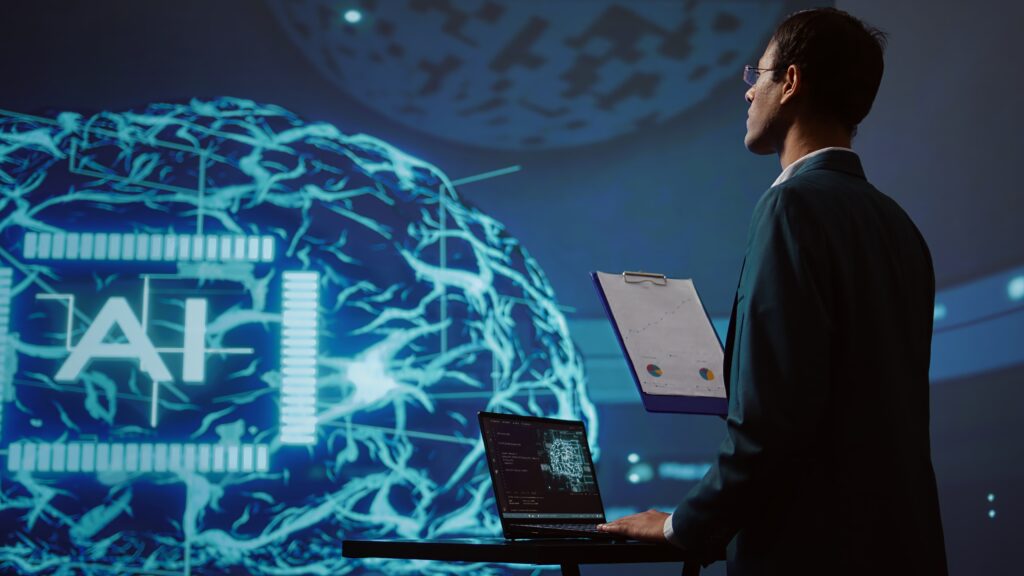Introduction
Artificial Intelligence, or AI, is more than just a buzzword — it is changing industries, whether healthcare, finance, entertainment or education. But how do you classify AI? Not all artificial intelligence are the same; they vary widely in types as well as sophistication, and it can be difficult to know how it all fits together. This guide will demystify it in layman terms and get you to understand the basics and advanced stuff.
From students and tech enthusiasts, to business professionals, this article will help you navigate through the types of AI. You’ll also learn about the role of AI in daily life and how it’s influencing the future.
What Does It Mean to Classify AI?
Before we dive into categories, it’s worth covering what classification means here. AI is classified based on its capabilities, functionalities or mode of operation. In doing so, we can gain insight as to what types of AI are tailor-fit for specific tasks.
Why Is Classifying AI Important?
A classification of AI can help businesses, developers, and researchers improve their solutions. Hand-in-hand, it helps consumers better recognize what technologies they’re using — whether they realize it or not — in their daily lives.
✅ Related Read: Brainstorm Examples of Technology You Encounter Daily

Types of Classification AI Based on Capabilities
Most important factor that classifies AI is by its capability level. There are three main categories:
1. Narrow Classify of AI (Weak AI)
Narrow AI is the most commonly used form of AI today.Narrow AI only performs a specific task. Its work is limited.It cannot perform tasks outside of its programming.
Example of Narrow AI Include:
- Voice Assistant i.e Siri and Alexa.
- Spam filter in email.
- Recommendation system of Youtube and Netflix.
2. General Classify of AI (Strong AI)
General AI or AGI (Artificial General Intelligence), refers to the AI system that has the ability to complete any type of task and understands like humans and can complete the task.
But General AI is still in theory, it is not possible in practice. Scientists and researchers are still working on deploying systems of General AI that can think, generate reasons and apply on multiple reasons.
3. Super Classify of AI
Super AI refers to the next level of Artificial intelligence that overrides human intelligence in every aspect of work; it can be creativity, decision making, emotional intelligence or problem solving.
While the supercomputer is a fascinating concept, therefore it belongs to science fiction rather than real world application.
Types of Classify of AI Based on Functionality
Another way to understand how to Classify AI is based on Functionality. This classification explains how AI adopts, operates and learns.
There are following categories are as follow;
1. Reactive Machines Classify of AI
Reactive Machines are basic AI. They do not have memory. They receive input and respond to it.
IBM blue deep chess computer is an example of Reactive Machines.
2. Limited Memory
This type of AI is more advanced as compared to Reactive Machines. Limited Memory uses historical data to make decisions. Many applications follow these rules such as self driving cars that follow the rules i.e lane changes, nearby traffic and traffic signals
3. Theory of Mind in Classification of AI
Theory of mind is a future category of AI which understands the emotion of humans, belief and thoughts. AI with theory of mind is more likely to human attraction; it can be used in customer services and healthcare etc.
4. Self-Aware AI
This will be a highly advanced level of AI which will also keep itself in mind and will make its decisions better than humans.. But this AI is still in the imagination.
Application-Based AI Classification
Apart from capability and functionality, AI is grouped on the bases of application. This classification describes how and where businesses and industries can utilize artificial intelligence. Classification of AI on the basis of application is as follow;
1. Classification AI in Healthcare
AI helps in detecting every type of disease, recommending disease treatment, and analyzing medical reports. Using the machine learning model, it has been able to detect cancer cells more effectively as compared to the traditional method.
2. Classification AI in Finance
With the help of AI in the financial industry, it has become easy to detect monetary and transactional fraud without anyone’s knowledge. Apart from this, trading has been automated and customer support through chatbots has become more efficient and better than before.
Read Also: How to Borrow Money from Cash App
3. Classification AI in Education
AI personalized learning, automates the grading system, which removes errors, everybody knows that AI provides virtual tutors, which is very helpful for students.
4. Classification AI in Entertainment
AI has created such platforms which suggest music and generate playlists according to the human mind and mood. Realistic effects in movies are also created with the help of AI.
How Classification Helps in AI Development
Knowing about how to classify AI is not just for theoretical, it has practical impact on real life, For instant
- Developers select different models depending on the classification and their requirement .
- Companies use AI classification to ensure how and which AI will help to make compliance and provide safety.
- Governments and other institutes use these categories to regulate AI applications ethically and for safety measurement.
Misconceptions About Classify of AI
“All AI can think like humans.”
This is a false statement about AI. Most AI today is narrow AI, designed for one task or for a particular task, AI can not hold an overall project.
“AI will replace all jobs.”
Not entirely. It is possible that some jobs will change with AI , while others will evolve. AI will create new job opportunities that never existed before.
Future of AI Classifications:
AI is evolving very fast in every field. And new classifications can also come up in the future like quantum AI, emotional AI, etc. AI is also transforming its system into a hybrid system in which AI will have the ability to do multiple tasks.
Final Thoughts: Why Knowing How to Classify AI Matters
When you understand the classification of AI well, it becomes easier to make smart decisions for yourself whether you want to implement AI in business, add it to healthcare or understand AI as a theory.
If you want to learn more about AI, be sure to read our blogs. Click here to read the blogs
FAQs About Classifying AI
Q: What is the most common type of AI today?
Ans: Narrow AI is commonly used in almost every field, it is found in chatbots recommendation system and virtual assistant.
Q: Is General AI real?
Ans: Not now, scientist are working on it but still it is in theory and developing phase.
Q: Why should businesses care about classifying AI?
Ans: It helps the businesses to choose the right AI tool according to their need and demand. It also ensures regulatory compliance.



